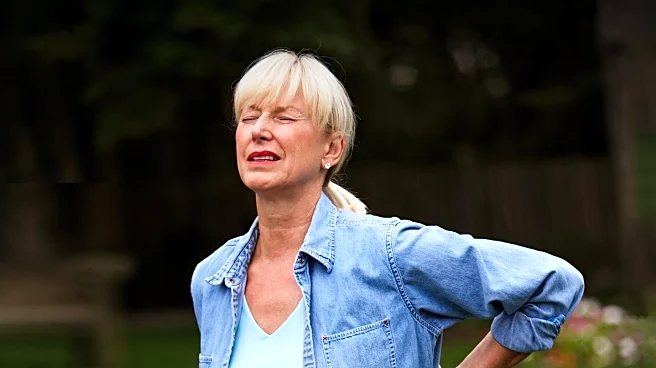What's Happening?
Dr. Sanjay Bhojraj, a US cardiologist with 20 years of experience, emphasizes the importance of daily movement in reducing the risk of chronic diseases such as heart disease, diabetes, and cognitive decline. According to Dr. Bhojraj, regular strength and aerobic exercises can lower these risks by up to 50%, a benefit unmatched by any medication. He highlights that over 80% of chronic diseases are driven by lifestyle factors, including how individuals move, eat, sleep, and manage stress. Dr. Bhojraj advocates for incorporating movement into daily life, whether through walking, yoga, swimming, or strength training, as a foundational element for healthier aging.
Why It's Important?
The emphasis on movement as a preventive measure against chronic diseases underscores a shift towards lifestyle-based health interventions. This approach could significantly impact public health policy by encouraging more active lifestyles to combat prevalent health issues. The potential reduction in healthcare costs associated with heart disease, diabetes, and cognitive decline could be substantial, benefiting both individuals and the healthcare system. By prioritizing movement, individuals may experience improved longevity and quality of life, reducing reliance on pharmaceuticals and medical interventions.
What's Next?
Dr. Bhojraj's insights may prompt healthcare providers and policymakers to advocate for increased physical activity as a standard part of preventive healthcare. This could lead to initiatives promoting accessible exercise programs and community-based activities to encourage movement among diverse populations. Additionally, further research may be conducted to explore the specific types and intensities of movement that yield the greatest health benefits, potentially influencing guidelines for physical activity.
Beyond the Headlines
The focus on movement as a key health tool highlights ethical considerations regarding the accessibility of exercise opportunities for all socioeconomic groups. Ensuring equitable access to safe spaces for physical activity and affordable exercise programs is crucial. Moreover, the cultural shift towards valuing movement over medication may challenge existing healthcare paradigms, encouraging a more holistic approach to health and wellness.












